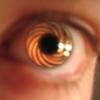Comments

11 minutes ago, Irusan, son of Arusan said:Not to be negative, but that "Dyslexic" font doesn't actually help dyslexics read any better. In fact, studies find that it is either neutral or negative to reading speed and comprehension (see, for example, here or a bunch of paywalled articles in the primary literature)
(Also: you don't actually need a fixed space font for programming, just ask Bjarne Stroustrup)
From the paper link you linked:
QuoteReading with the font “Dyslexie” does not improve the reading speed for reading words. However some specific type of reading errors are decreased, but others are increased. Overall the dyslectics read fewer errors while reading the words printed in the font “Dyslexie”. Further research in needed to examine the hypotheses that the reading speed and accuracy increases while reading texts that are printed in the font “Dyslexie”.
If we're talking about "ease" of reading (which I would assume to mean how much exertion it takes to read correctly), then comparing reading speeds doesn't seem like the whole story and may only be a proxy for the actual thing we're trying to measure. By analogy, it might take me the same amount to time to lift a 12lb weight as it does for me to lift a 20lb weight, yet one of them is clearly more difficult.
If you read down to the results section, you'll see that the reported differences are not actually statistically significant. (0.10 > p > 0.05) and not very large anyway and, as the quote you highlighted says "some specific type of reading errors are decreased, but others are increased". That link is just a Master's thesis, but there's been a few papers on this and the findings are heavily neutral for the font.
Here, I found a good summary that's not paywalled in this paper. It also finds that adjusting the spacing of a more normal font (e.g. Arial) produces beneficial effects that are as large as the Dyslexie font.
Also, I should say that what helps dyslexics read is frequently very specific to the individual, so it's quite possible that some dyslexics will benefit from the font (personally, I find it very ugly and hard to read) and so if you are dyslexic and find it benefits you, well, all power to you.


Not to be negative, but that "Dyslexic" font doesn't actually help dyslexics read any better. In fact, studies find that it is either neutral or negative to reading speed and comprehension (see, for example, here or a bunch of paywalled articles in the primary literature)
(Also: you don't actually need a fixed space font for programming, just ask Bjarne Stroustrup)